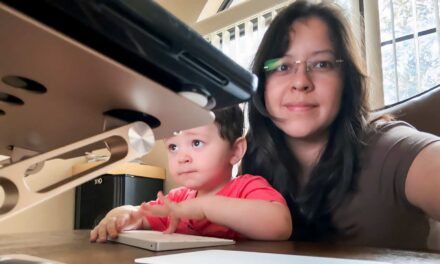
Setting sail on a new era of AI innovations
ASU researcher awarded Early-Career Research Fellowship from National Academies

The most crucial aspect of a structure, beyond its initial strength, is its ability to withstand forces over time. These disturbances can arise from weather, natural disasters or human activities.
Offshore structures — such as drilling barges, fish farms, wind turbines and boats — are subject to constant force from wind, currents and waves. These phenomena have the power to decrease their lifespans over time.
Leixin Ma, an assistant professor of mechanical engineering in the Ira A. Fulton Schools of Engineering at Arizona State University, says the presence of solid objects in fluids amid currents can generate churning vortexes that cause significant damage.
“These vortexes can induce force, causing the structure to vibrate periodically and deteriorate over time,” Ma says. “We are developing the digital twin models, which are virtual models of complex systems, to predict this behavior of offshore energy systems and deploy preventative strategies.”
Ma was recently awarded the Gulf Research Program’s Early-Career Research Fellowship for Offshore Energy Safety from the National Academies of Sciences, Engineering and Medicine, or NAS, for her proposal to develop real-time predictive models for environmental-induced damage to offshore structures.
The program supports emerging scientific leaders researching novel ideas for improving offshore energy system safety and the well-being of coastal communities and ecosystems.
Alejandra Hernandez Escobar, a mechanical engineering doctoral student working in Ma’s lab, says the interdisciplinary effort is crucial for advancing the offshore industry and contributing to a more sustainable future.
“We’re at a turning point where sustainability, cleaner energy and responsible food sources are gaining momentum,” Escobar says. “By integrating knowledge from various fields and leveraging machine learning techniques, this research aims to make quicker and more reliable predictions in flow-induced vibration problems.”

Leixin Ma
Developing expertise in machine learning for structural research
Ma developed an interest in fluid-structure interactions during her undergraduate studies at Shanghai Jiao Tong University in China. She then pursued a doctoral degree in mechanical engineering at the Massachusetts Institute of Technology.
Despite the dry climate, Ma found a home for her water-focused research at the School for Engineering of Matter, Transport and Energy, part of the Fulton Schools, due to its strong community in machine learning for mechanical and materials engineering.
Ma researches structural mechanics and fluid-structure interactions of flexible structures. She has developed physics-informed machine learning systems to improve prediction efficiency and generalizability of the flow-induced vibration for long, slender structures.
Her work has been integrated into numerical simulations and impacted the continued development of a widely used ocean engineering software, known as SHEAR7, which is used by offshore engineering companies around the world to estimate the fatigue damage rate of drilling and production risers exposed to ocean currents.
Ma’s techniques integrate machine learning and artificial intelligence, known as AI, into mechanics problems. Her lab, the Ocean and Soft Intelligent Structure Interaction lab, is developing machine learning tools to develop fast predictive models and design smart structures in complex fluid flow conditions.

A pipe moved in water in oscillating patterns is known as vortex-induced vibration, or VIV, to test the accuracy of the modeling program. Image courtesy of Leixin Ma.

The predicted displacement, shown in red, shows a significant overlap with the experimentally measured displacement. Figures courtesy of Leixin Ma
New models for securing structures
Ma is currently applying her expertise through the Gulf Research Fellowship from the National Academies. She will receive $76,000 over the course of two years to develop real-time predictive models for environmental-induced damage to offshore structures. This modeling technology will guide maritime developers in identifying safe conditions, thereby creating opportunities for damage prevention and ensuring the longevity of the structures.
The long flexible mooring lines, which secure the structure to a place, and riser systems, which transport fluids between the seabed and the surface, are are subjected to flow-induced vibration. Due to accumulated fatigue damage, offshore energy structures may develop material cracks in their critical locations sooner than expected. The failure of these key systems may cause millions of dollars to the offshore industries and even environmental disasters such as oil spills.
Ma says using AI will help researchers predict, prevent and understand systematic damage.
“Traditionally, people use expensive and complicated simulations for the dynamic interaction between fluid and marine structures,” she says. “My approach combines machine learning and mechanics-based models to develop faster predictive models, which can guide the marine operators to take action and intervene.”
Ma aspires to create a course for students to combine machine learning and physics-based models to study mechanics problems. She looks forward to the opportunities the award will provide for her and her team, noting her interest in pursuing future collaborations with faculty members in the ASU School of Ocean Futures.
“This award will attract more students to join my lab and spark their interest in the field,” she says.


































